Jumbo Shrimp
MuscleChemistry Registered Member
This is a great article by C.J Murphy about the sumo deadlift. It is not a hip hinge!
[FONT="][h=1]The Sumo Deadlift — You're Doing It the Wrong Way[/h][/FONT]
[FONT="]TAGS: TPS performance, how do I sumo deadlift?, deadlift form, deadlift technique, cj murphy, conventional deadlift,sumo deadlift[/FONT]
[FONT="]
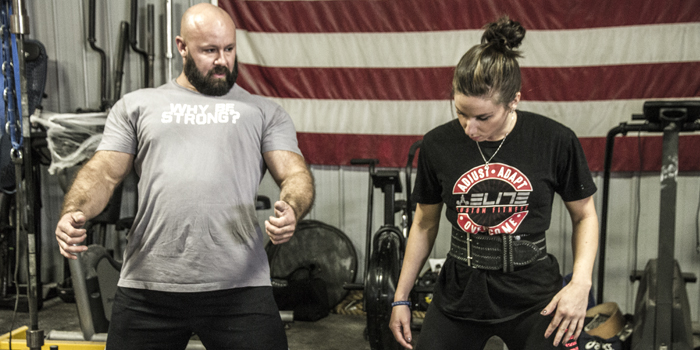

[h=2]Shorter Range of Motion[/h]By spreading your legs out wider, you automatically shorten the distance the bar has to travel to lockout. In theory, this equals more pounds lifted. This one is common sense.
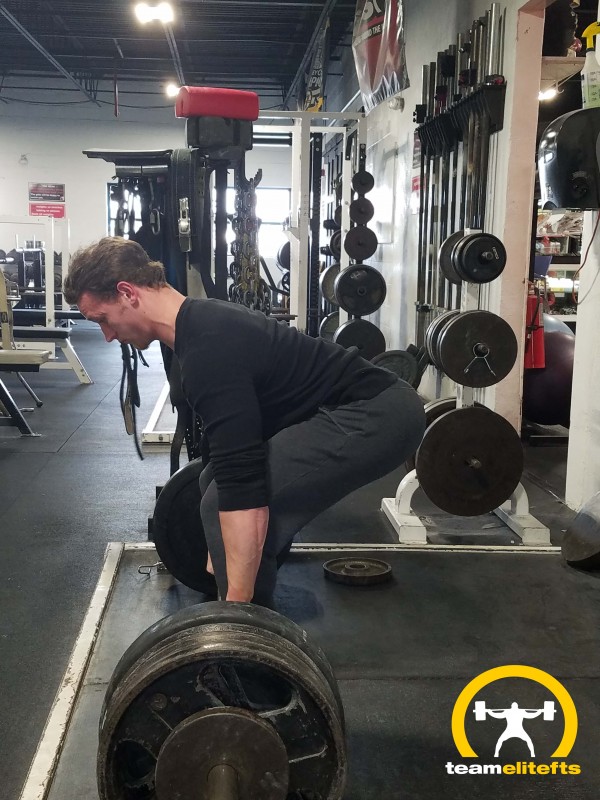
[h=2]Less Shear Force on Your Lumbar Spine[/h]This one is not so common sense unless you know a little about levers and how the body works. Yes, I can bore you with all of the big words and science stuff, but I like to write in English. Basically, since your body is in a more upright position, you realize less damaging shear force on the lumbar spine. Your spinal column is a marvel of engineering. Most if it has a structure to support it. Your lumbar region, however, does not. It only has the surrounding musculature to keep it safe. When strength training, we have two forces to contend with:
Compression is not bad, it’s actually good. Most of the time. Shear is different. It is destructive. Normal amounts of shear forces are okay for you as long as your movement pattern is good.
When your movement patterns are bad, things can go south quickly.
We can’t do anything to eliminate shear forces on the spine and the rest of the body (think knees and elbows).
We can minimize it, though.
Proper form and technique will go a long way to minimizing shear as will proper exercise selection. The conventional deadlift and the low bar powerlifting style of squatting place a higher amount of shear on the lumbar region than a high bar squat or a sumo deadlift.
This is due to the positions you are in.
The angle your body is at on a conventional deadlift amplifies the shear on your lumbar due to how far you are bent over. This isn’t necessarily bad, just a reason you want to make sure your form is dialed in. The sumo deadlift does not as you are supposed to be almost upright.
[FONT="]WATCH: How I Made It Easy to Rep A 1000-pound Deadlift[/FONT]
As a matter of fact, many forward-thinking therapists use the sumo deadlift and variations to rehab their patients from a back injury.
At TPS, we have done the exact same thing many times getting those with jacked up backs and disc injuries back to life and to training.
[h=2]Anatomically Better for Some[/h]We all have what is called Angle of Q in our hips. The Angle of Q is loosely defined as a measurement of the angle between the quad and the patella tendon. Some people have a greater Angle of Q than others and women have a greater Angle of Q than men.
Go ahead and get triggered and call me sexist if you want here, but the Sumo Deadlift may be a better choice for women as it accommodates their Angle of Q better, putting them in a mechanically superior position.
Lining up muscles and joints nice and straight will usually lead to better lifts. Sumo allows many to take advantage of their body’s natural leverage.
Long legged lifters will usually benefit from sumo too.
[h=2]Improves Your Conventional Deadlift[/h]This should be a no-brainer. Performing exercise variations place a new stimulus on your body right? Working sumo deadlifts in, if you pull conventional, generally makes your conventional pull go up. This is a result of different muscle recruitment and the strengthening of said muscles in a similar movement pattern.
Easy right?
It also applies the other way. If you pull sumo, adding in conventional pulls will build your regular stance. I call these Opposite Deadlifts.
You can too.
[h=2]The Sumo Deadlift — You're Doing It the Wrong Way[/h]Now that we have the sumo deadlift explanation out to of the way, let’s look how you're doing it wrong.
It’s not a hip hinge!
The hip hinge is bandied about all over the internet and is killed on everything. It’s coached to death. It’s also not appropriate on many exercises. I am 100% sure that I’ll be getting comments from certified trainers telling me I am wrong. I’m not.
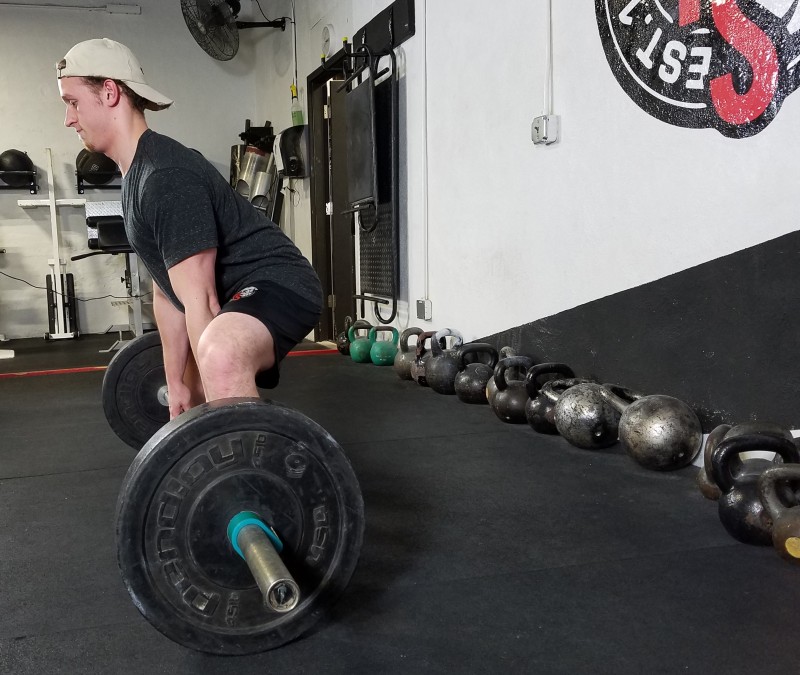 WRONG!
WRONG!
[h=2]The Sumo Deadlift — Here’s the Right Way[/h][h=2]Set Your Stance[/h]Your feet need to be wide and your toes need to be out facing the bar so that your Angle of Q is optimal. Get your toes pointed towards the plates so that your femur and kneecap are in line with your toes.
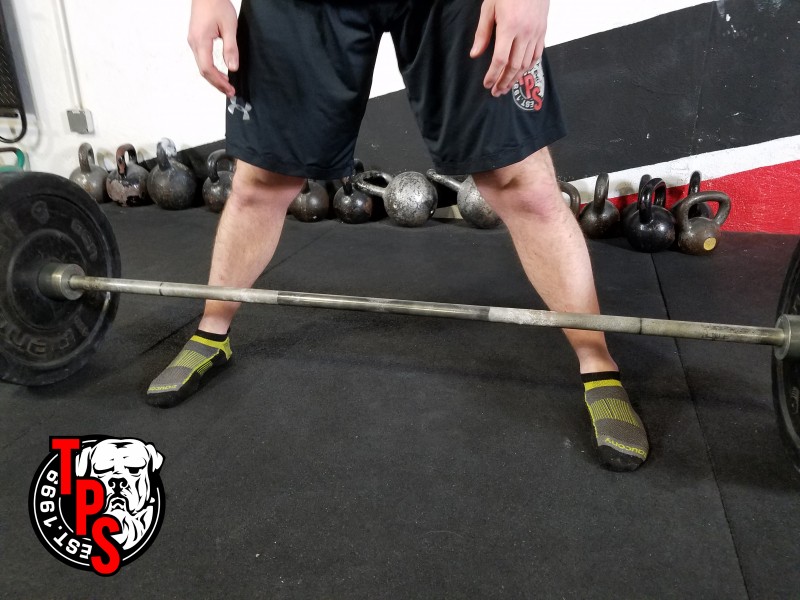 NOPE!
NOPE!
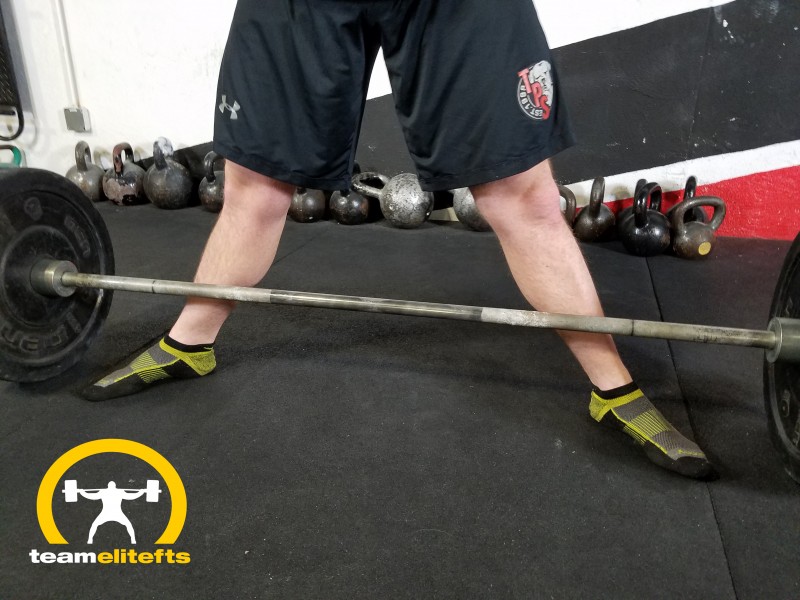 YUP!
YUP!
[h=2]Root Your Feet[/h]There are tons of cues for this. I prefer root. Many people say “Spread the Floor” and that is fine. Except when it is misunderstood and people spread so hard that they roll their ankles. You want to create a big arch in your foot so that all of the muscles there are ready to support you through the lift. Apply twisting pressure on the outside of your feet and pull your heels together. Your feet will not actually move, it’s the act of generating force here that counts. If you do this right, you’ll feel the arch in your foot increase. Do a few sets barefoot and have a training partner look at your feet. If there is no arch, stop.
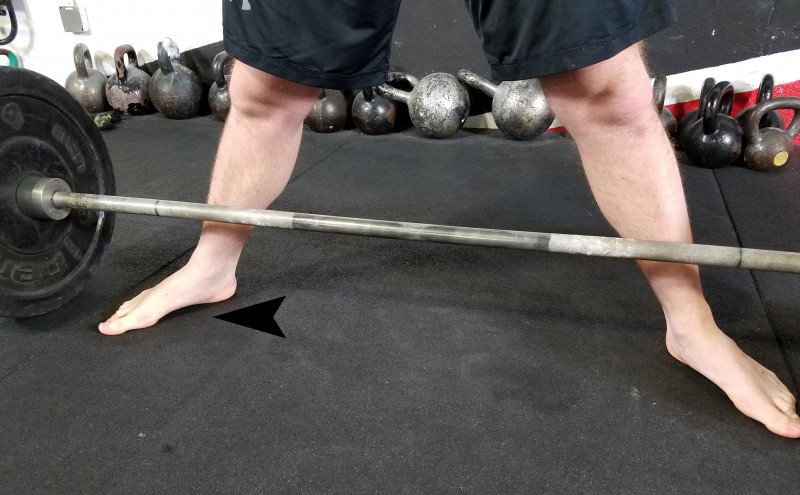 NO ROOT!
NO ROOT!
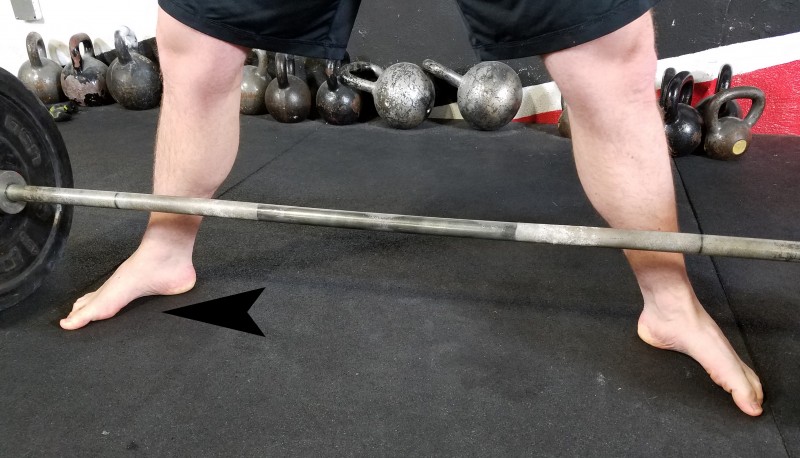 ROOTED LIKE A 100-YEAR-OLD OAK TREE!
ROOTED LIKE A 100-YEAR-OLD OAK TREE!
Maintain this pressure throughout the lift!
[h=2]Turn Your Quads[/h]Rotate your femur in the socket to line up your toes, knees, and feet.
It’s easy. Just turn your quads out.
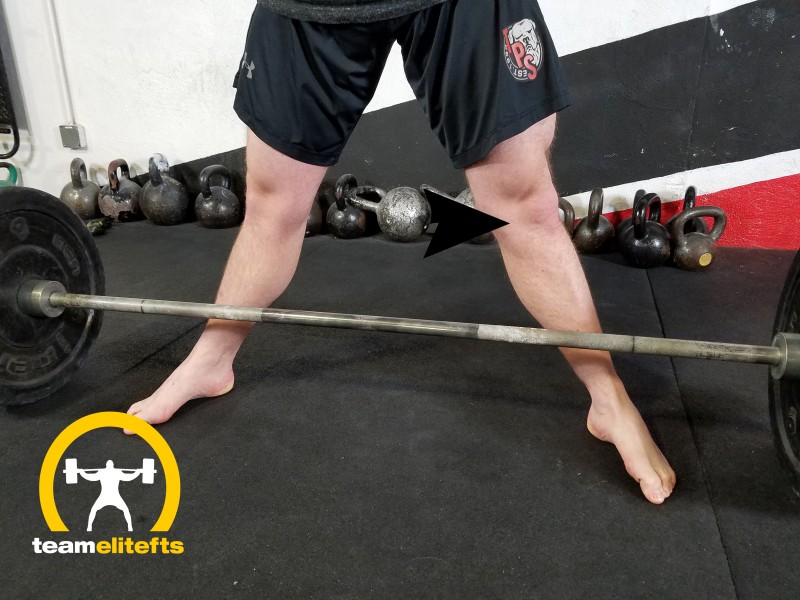 KNEES/QUADS ARE OUT!
KNEES/QUADS ARE OUT!
[h=2]Brace[/h]Not covering that here. I’ve already written a few logs on bracing and I hope you read them. NOW! Here is where most of you do things wrong.
[h=2]Knee Hinge [/h]You need to initiate your movement towards the bar by rooting your feet harder and driving your knees sideways. I got this cue from Boris Sheiko:
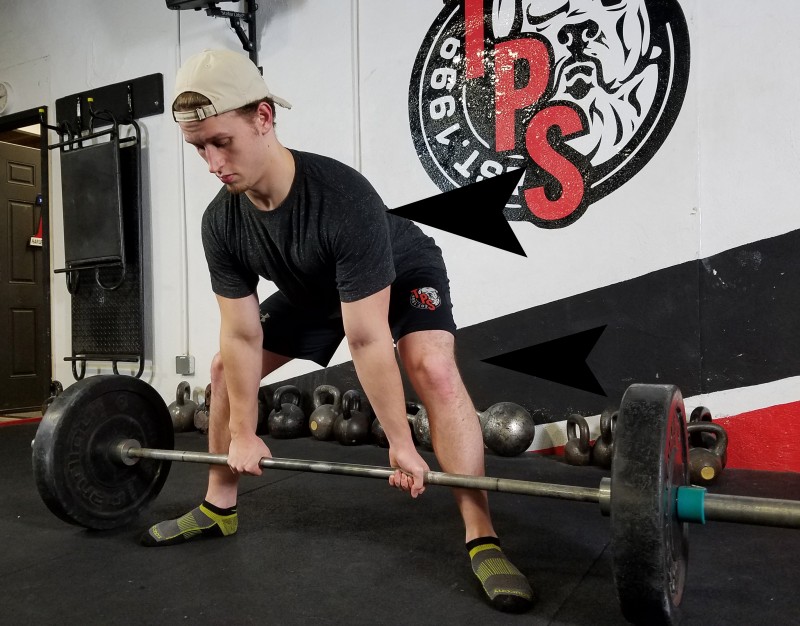 NOPE!
NOPE!
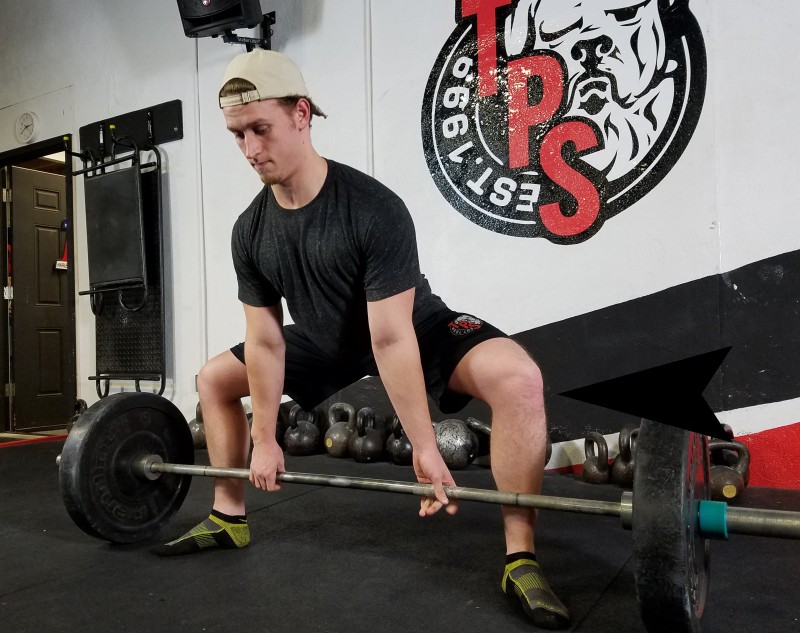 YESSSSS!
YESSSSS!
When you grip the bar you must make the arms long, take the slack out, and bend the bar. You know what I mean, right?
As you do this, you MUST wedge the bar into your body and your body into the bar. If you do it right, the bar will force your legs out wider. Part of the wedge is getting your torso upright and your shoulders behind the bar. This is pretty easy; pull the slack out of the bar and drop your butt down a hair and drive your chest up and open it. You should now look like this:
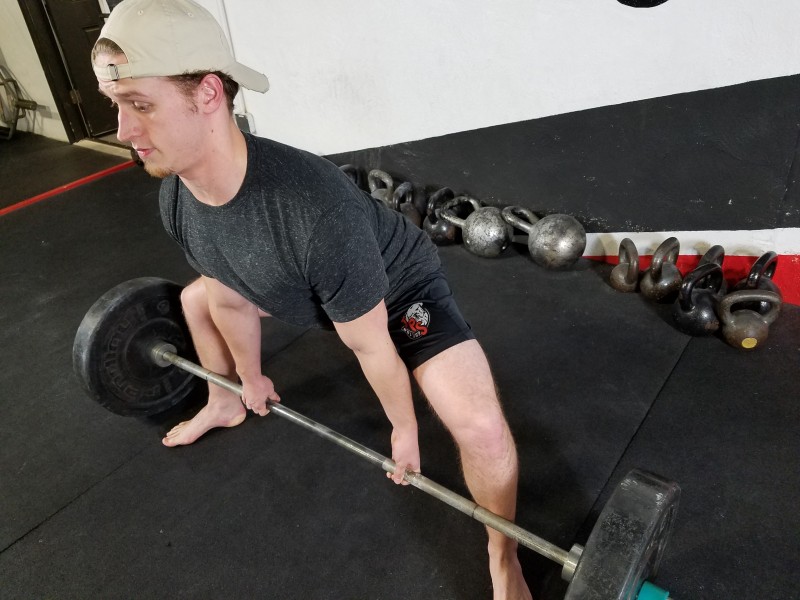
Not this:
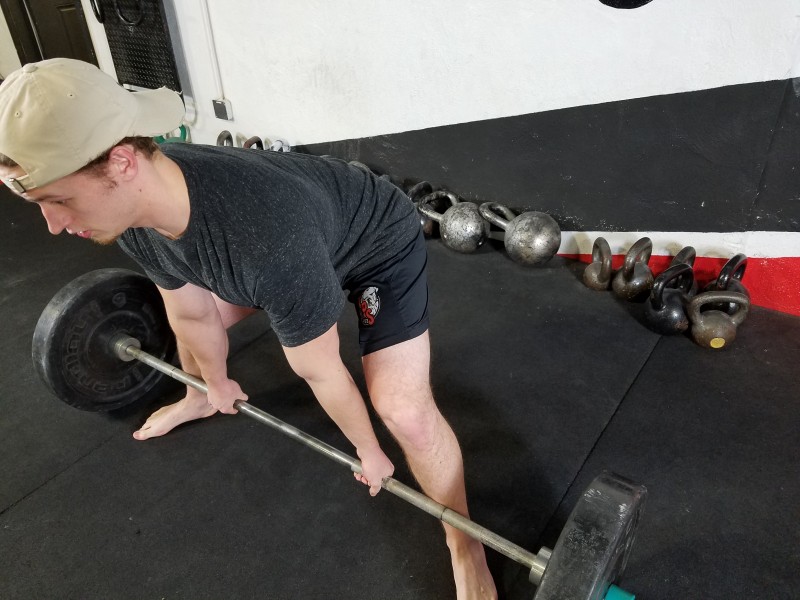
[h=2]Butt Business[/h]Oh, and keep your arse high. It’s not a squat. Your butt needs to be higher that you think. How do you know where to keep it? Again, easy. As you drive the knees out to get to the bar, STOP as soon as you take your grip. Don’t go any lower.
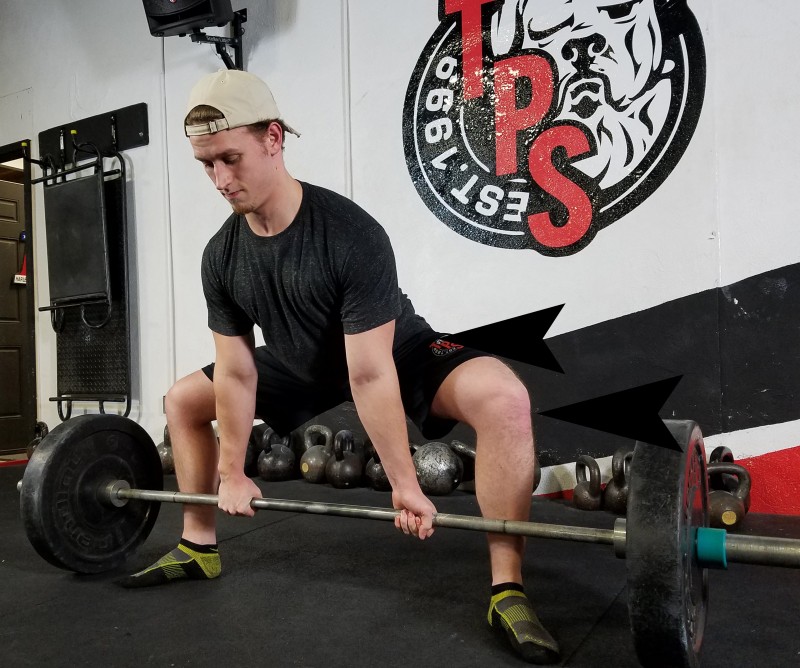
And there it is.
Hopefully, you will practice this on your next session and smash a new PR!
[/FONT]
https://www.elitefts.com/education/the-sumo-deadlift-youre-doing-it-the-wrong-way/
[FONT="][h=1]The Sumo Deadlift — You're Doing It the Wrong Way[/h][/FONT]
[FONT="]TAGS: TPS performance, how do I sumo deadlift?, deadlift form, deadlift technique, cj murphy, conventional deadlift,sumo deadlift[/FONT]
[FONT="]


Originally published in January of 2017
The sumo deadlift is a misunderstood exercise. I frequently see room for improvement with more lifters than you think. Before we go into the sumo deadlift technique, let’s look at why you would do it. Sumo offers advantages over conventional in these ways:- [FONT="]Shorter range of motion[/FONT]
- [FONT="]Less shear force on your lumbar spine[/FONT]
- [FONT="]Anatomically better for some[/FONT]
- [FONT="]Improves your conventional deadlift[/FONT]
[h=2]Shorter Range of Motion[/h]By spreading your legs out wider, you automatically shorten the distance the bar has to travel to lockout. In theory, this equals more pounds lifted. This one is common sense.

[h=2]Less Shear Force on Your Lumbar Spine[/h]This one is not so common sense unless you know a little about levers and how the body works. Yes, I can bore you with all of the big words and science stuff, but I like to write in English. Basically, since your body is in a more upright position, you realize less damaging shear force on the lumbar spine. Your spinal column is a marvel of engineering. Most if it has a structure to support it. Your lumbar region, however, does not. It only has the surrounding musculature to keep it safe. When strength training, we have two forces to contend with:
- [FONT="]Compression[/FONT]
- [FONT="]Shear[/FONT]
Compression is not bad, it’s actually good. Most of the time. Shear is different. It is destructive. Normal amounts of shear forces are okay for you as long as your movement pattern is good.
When your movement patterns are bad, things can go south quickly.
We can’t do anything to eliminate shear forces on the spine and the rest of the body (think knees and elbows).
We can minimize it, though.
Proper form and technique will go a long way to minimizing shear as will proper exercise selection. The conventional deadlift and the low bar powerlifting style of squatting place a higher amount of shear on the lumbar region than a high bar squat or a sumo deadlift.
This is due to the positions you are in.
The angle your body is at on a conventional deadlift amplifies the shear on your lumbar due to how far you are bent over. This isn’t necessarily bad, just a reason you want to make sure your form is dialed in. The sumo deadlift does not as you are supposed to be almost upright.
[FONT="]WATCH: How I Made It Easy to Rep A 1000-pound Deadlift[/FONT]
As a matter of fact, many forward-thinking therapists use the sumo deadlift and variations to rehab their patients from a back injury.
At TPS, we have done the exact same thing many times getting those with jacked up backs and disc injuries back to life and to training.
[h=2]Anatomically Better for Some[/h]We all have what is called Angle of Q in our hips. The Angle of Q is loosely defined as a measurement of the angle between the quad and the patella tendon. Some people have a greater Angle of Q than others and women have a greater Angle of Q than men.
Go ahead and get triggered and call me sexist if you want here, but the Sumo Deadlift may be a better choice for women as it accommodates their Angle of Q better, putting them in a mechanically superior position.
Lining up muscles and joints nice and straight will usually lead to better lifts. Sumo allows many to take advantage of their body’s natural leverage.
Long legged lifters will usually benefit from sumo too.
[h=2]Improves Your Conventional Deadlift[/h]This should be a no-brainer. Performing exercise variations place a new stimulus on your body right? Working sumo deadlifts in, if you pull conventional, generally makes your conventional pull go up. This is a result of different muscle recruitment and the strengthening of said muscles in a similar movement pattern.
Easy right?
It also applies the other way. If you pull sumo, adding in conventional pulls will build your regular stance. I call these Opposite Deadlifts.
You can too.
[h=2]The Sumo Deadlift — You're Doing It the Wrong Way[/h]Now that we have the sumo deadlift explanation out to of the way, let’s look how you're doing it wrong.
It’s not a hip hinge!
The hip hinge is bandied about all over the internet and is killed on everything. It’s coached to death. It’s also not appropriate on many exercises. I am 100% sure that I’ll be getting comments from certified trainers telling me I am wrong. I’m not.
- The low bar squat is a hip hinge.
- The high bar squat is a hip hinge.
- The conventional deadlift is a hip hinge.
- The sumo deadlift is a knee hinge.
 WRONG!
WRONG![h=2]The Sumo Deadlift — Here’s the Right Way[/h][h=2]Set Your Stance[/h]Your feet need to be wide and your toes need to be out facing the bar so that your Angle of Q is optimal. Get your toes pointed towards the plates so that your femur and kneecap are in line with your toes.
 NOPE!
NOPE! YUP!
YUP![h=2]Root Your Feet[/h]There are tons of cues for this. I prefer root. Many people say “Spread the Floor” and that is fine. Except when it is misunderstood and people spread so hard that they roll their ankles. You want to create a big arch in your foot so that all of the muscles there are ready to support you through the lift. Apply twisting pressure on the outside of your feet and pull your heels together. Your feet will not actually move, it’s the act of generating force here that counts. If you do this right, you’ll feel the arch in your foot increase. Do a few sets barefoot and have a training partner look at your feet. If there is no arch, stop.
 NO ROOT!
NO ROOT! ROOTED LIKE A 100-YEAR-OLD OAK TREE!
ROOTED LIKE A 100-YEAR-OLD OAK TREE!Maintain this pressure throughout the lift!
[h=2]Turn Your Quads[/h]Rotate your femur in the socket to line up your toes, knees, and feet.
It’s easy. Just turn your quads out.
 KNEES/QUADS ARE OUT!
KNEES/QUADS ARE OUT![h=2]Brace[/h]Not covering that here. I’ve already written a few logs on bracing and I hope you read them. NOW! Here is where most of you do things wrong.
[h=2]Knee Hinge [/h]You need to initiate your movement towards the bar by rooting your feet harder and driving your knees sideways. I got this cue from Boris Sheiko:
Imagine that you were deadlifting in a very narrow corridor with a wall about ½” in front of your knees and chest and ½” behind your butt. As you get to the bar, don’t let your knees, chest or butt touch the wall.
[h=2]Wedge Yourself into the Bar and Squish[/h]Squish everything front to back as tight as you can and once you get your grip, wedge in.
 NOPE!
NOPE! YESSSSS!
YESSSSS!When you grip the bar you must make the arms long, take the slack out, and bend the bar. You know what I mean, right?
As you do this, you MUST wedge the bar into your body and your body into the bar. If you do it right, the bar will force your legs out wider. Part of the wedge is getting your torso upright and your shoulders behind the bar. This is pretty easy; pull the slack out of the bar and drop your butt down a hair and drive your chest up and open it. You should now look like this:

Not this:

[h=2]Butt Business[/h]Oh, and keep your arse high. It’s not a squat. Your butt needs to be higher that you think. How do you know where to keep it? Again, easy. As you drive the knees out to get to the bar, STOP as soon as you take your grip. Don’t go any lower.

And there it is.
Hopefully, you will practice this on your next session and smash a new PR!
[/FONT]
https://www.elitefts.com/education/the-sumo-deadlift-youre-doing-it-the-wrong-way/









